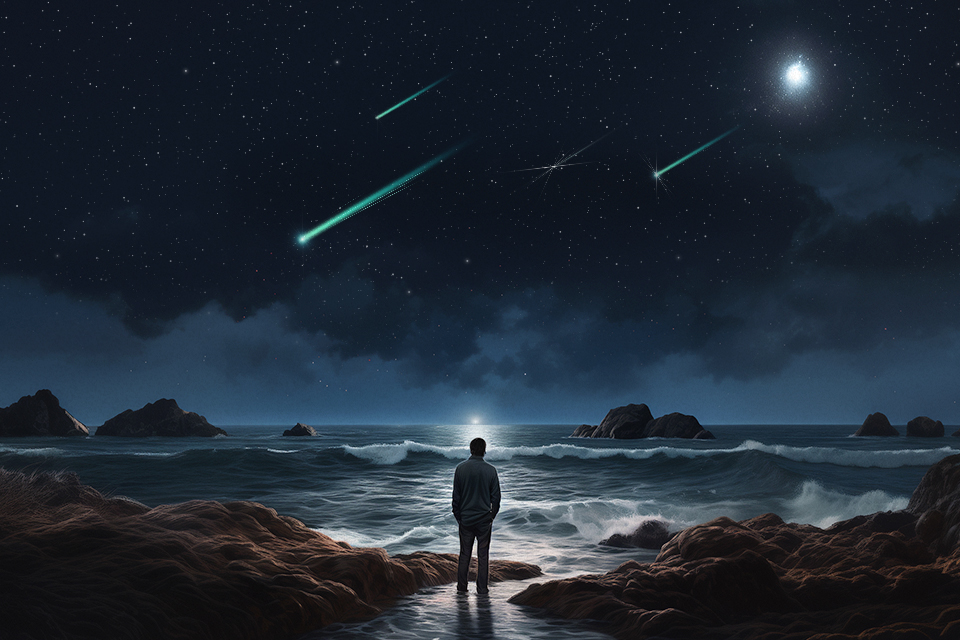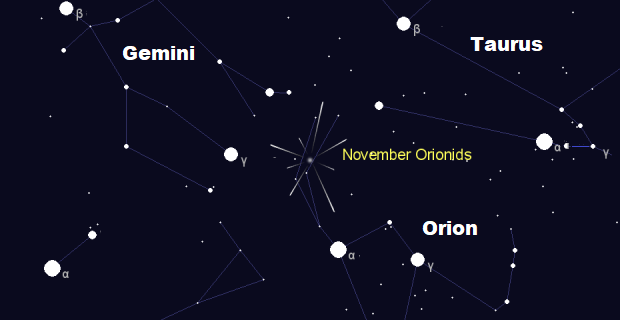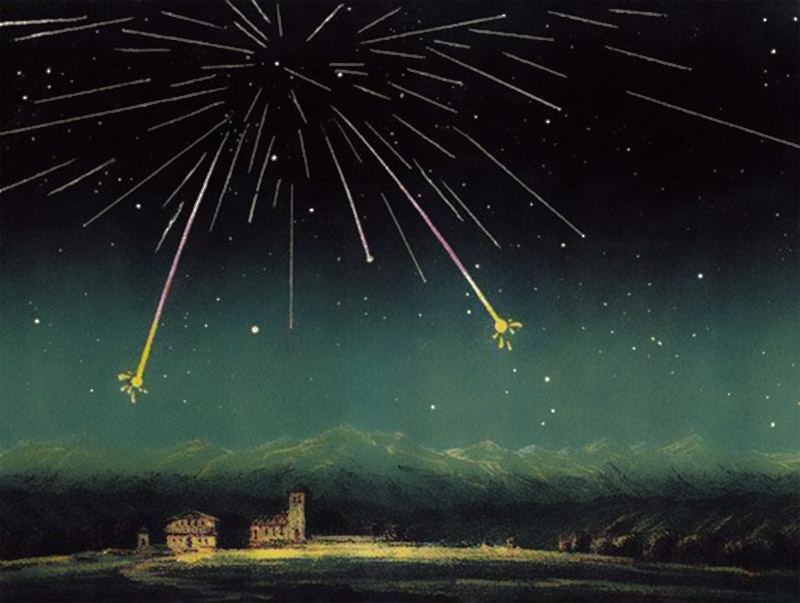The last autumn month is the time of activity of several quite powerful meteor showers, among which the “double” Taurids stand out, as well as the Leonids, known for their impressive bursts every 32–33 years. However, now astronomers do not expect big surprises from them. During the peak period, coming this year on the night of November 17-18, this shower will “produce” from 20 to 30 meteors per hour.
The Leonids belong to 13 major meteor showers, the zenithal hourly number of which (number of meteors observed, taking into account visibility conditions) reaches 10 or more annually during the epoch of the maximum. Some of them give us meteor showers from time to time — this is what bursts of activity are called when it is possible to observe more than a thousand meteors per hour. All these showers are quite well studied, almost every one of them has a known “parent” comet or asteroid, and astronomers even undertake to predict their “behaviour” for years to come, although the reliability of such forecasts often remains small. As for Leonids, most experts believe that this year their peak activity will remain at an average level and will not exceed 20. Its growth is expected no earlier than 2031.

In addition to the main most powerful showers, about three dozen minor ones are known, the activity of which even at the maximum does not exceed 10 meteors per hour, and most often reaches only 3-5. They were discovered after it became possible to take photos of the sky with a multi-hour exposure. Only in such images it was possible to see that several “falling stars”, which flared up within two or three hours, “flew away” from one radiant, and therefore belong to one meteor swarm. Similar showers include the November Orionids, which peak on the 27th. Astronomers cannot name the body responsible for the appearance of this swarm yet. Most likely, this is a very old comet that completely disintegrated many centuries ago.

At least, this is known for sure about another weak meteor shower at the end of autumn — Andromedids, the maximum of which is also expected on November 27. It was formed as a result of the decay of comet Biela (3D/Biela), which began in 1846 and was observed for another return six years later. After 1852, the comet was never seen again — this is reflected in its designation by the index “D”. But on November 27, 1872, when its close approach to the Earth was to take place, an impressive meteor shower with a capacity of up to 12 thousand “falling stars” per hour took place in the Northern Hemisphere. This shower gave astronomers another similar rain in November 1885. But it has only weakened since then and now its peak power does not exceed a dozen meteors.

The radiants of the Andromedids and the November Orionids are located quite far from each other in the sky, so these showers practically do not “intersect”, but, overlapping with the gradually fading activity of the Leonids, they create an increased “meteor background” of the last days of autumn. However, even if the weather is cloudless this year, observations at this time will be seriously hampered by an almost full Moon. But there is also good news: it is possible that a little later — in the first days of December — the Earth will pass through a fairly dense condensation of dust particles ejected by comet Biela back in the middle of the XVII century. They can cause Andromedids to activate up to two or three hundred meteors per hour.
Check you know about meteor showers!
Follow us on Twitter to get the most interesting space news in time
https://twitter.com/ust_magazine
